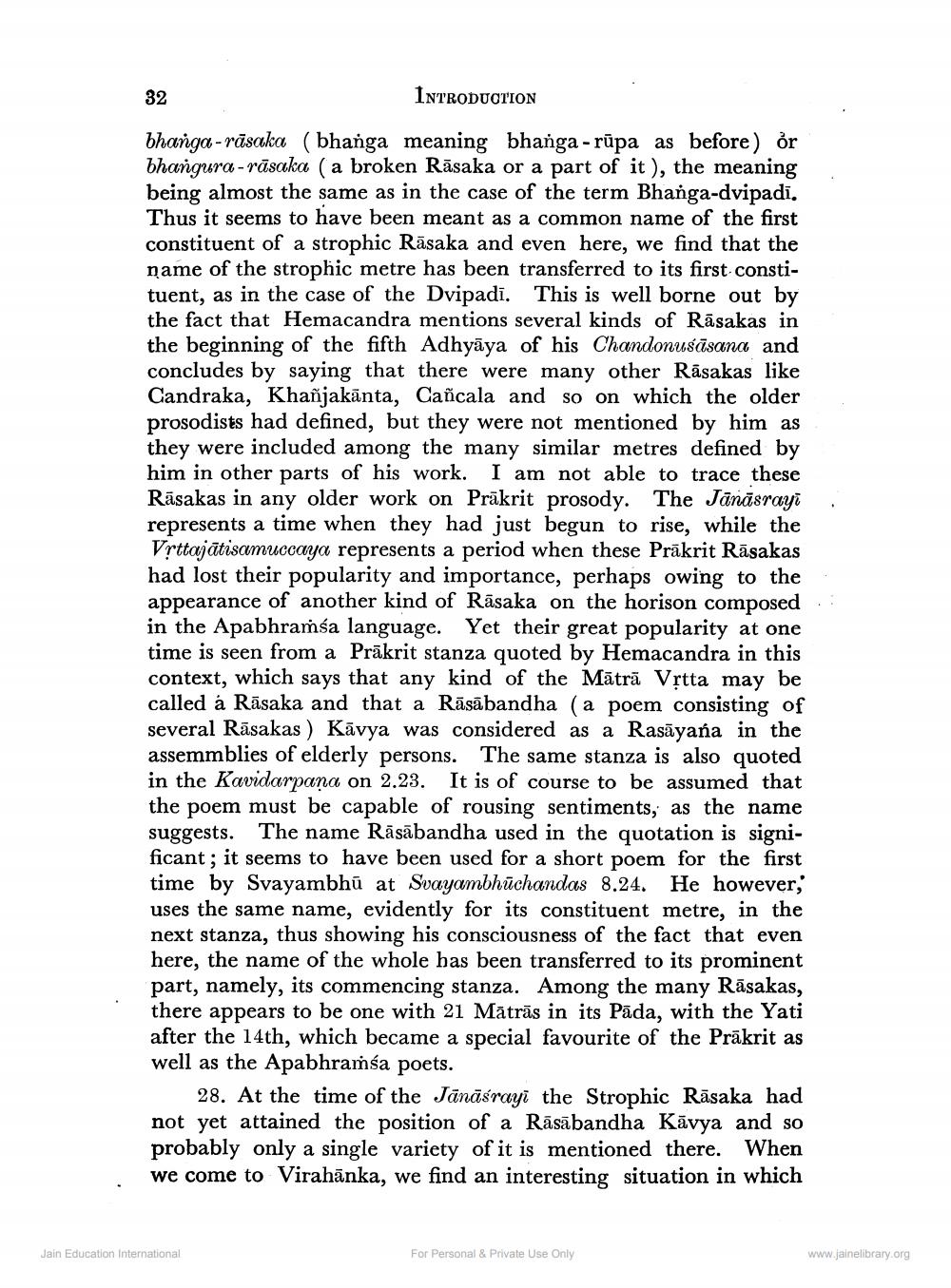________________
INTRODUCTION
bhanga-räsaka (bhanga meaning bhanga-rupa as before) or bhangura-rāsaka (a broken Rāsaka or a part of it), the meaning being almost the same as in the case of the term Bhanga-dvipadi. Thus it seems to have been meant as a common name of the first constituent of a strophic Rāsaka and even here, we find that the name of the strophic metre has been transferred to its first constituent, as in the case of the Dvipadi. This is well borne out by the fact that Hemacandra mentions several kinds of Rasakas in the beginning of the fifth Adhyaya of his Chandonasasana and concludes by saying that there were many other Rasakas like Candraka, Khañjakänta, Cañcala and so on which the older prosodists had defined, but they were not mentioned by him as they were included among the many similar metres defined by him in other parts of his work. I am not able to trace these Rasakas in any older work on Prakrit prosody. The Janasrayi represents a time when they had just begun to rise, while the Vrttajatisamuccaya represents a period when these Prakrit Rāsakas had lost their popularity and importance, perhaps owing to the appearance of another kind of Rasaka on the horison composed in the Apabhramsa language. Yet their great popularity at one time is seen from a Prakrit stanza quoted by Hemacandra in this context, which says that any kind of the Mäträ Vṛtta may be called á Rásaka and that a Rásábandha (a poem consisting of several Rūsakas) Kavya was considered as a Rasayana in the assemmblies of elderly persons. The same stanza is also quoted in the Kavidarpana on 2.23. It is of course to be assumed that the poem must be capable of rousing sentiments, as the name suggests. The name Räsäbandha used in the quotation is significant; it seems to have been used for a short poem for the first time by Svayambhū at Svayambhuchandas 8.24. He however, uses the same name, evidently for its constituent metre, in the next stanza, thus showing his consciousness of the fact that even here, the name of the whole has been transferred to its prominent part, namely, its commencing stanza. Among the many Rāsakas, there appears to be one with 21 Matras in its Pada, with the Yati after the 14th, which became a special favourite of the Prakrit as well as the Apabhramsa poets.
32
28. At the time of the Janasrayi the Strophic Rāsaka had not yet attained the position of a Rasabandha Kavya and so probably only a single variety of it is mentioned there. When we come to Virahanka, we find an interesting situation in which
Jain Education International
For Personal & Private Use Only
www.jainelibrary.org




